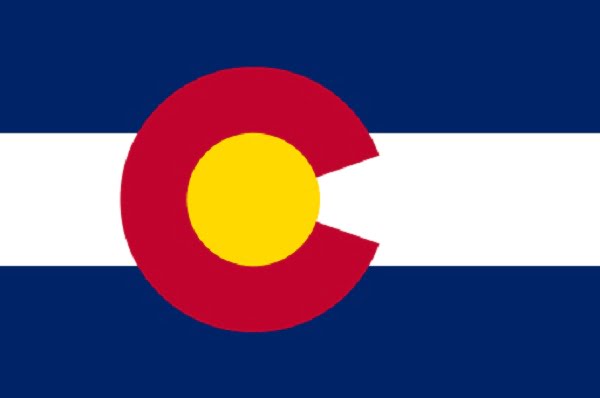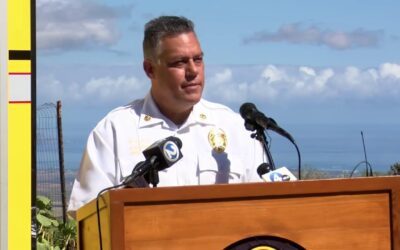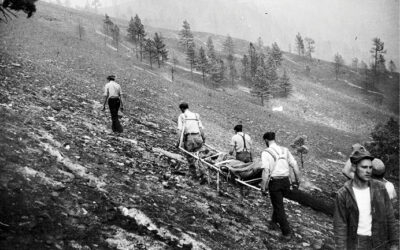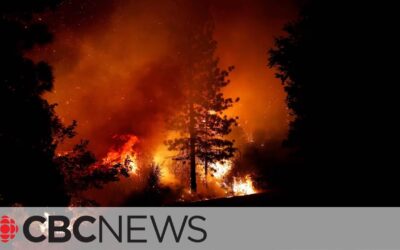Black Forest fire leaves many worrying about the next wildfire

By KEVIN SIMPSON and JOHN INGOLD, The Colorado Sun
DENVER (AP) — Nearly a 100-mile drive from where the most destructive wildfire in Colorado history tore through Black Forest near Colorado Springs, John Van Doren worried about his own community in the foothills surrounding the mountain town of Bailey.
Since becoming president of his homeowners association, Van Doren has become a big proponent of fire mitigation. The now-retired leader of manufacturing turnarounds and startups also founded Fire Adapted Bailey and worked with his neighbors to thin trees and brush on nearly 80 percent of their acreage — more than any other development in the area by a wide margin, he says.
“But I look around,” Van Doren adds, “and wonder if it’s still enough.”
He watched the news coverage of the Black Forest fire in June 2013 and recognized enough similarities to give him pause. Van Doren says he saw another community of “five-acre parcels in a forest that’s overgrown and out of ecological balance. Homes that were built to a building code that turned a blind eye to surviving wildfire.”
It wasn’t that his own neighborhood had been oblivious to the risks. Five communities around Bailey have earned Firewise recognition, a national program that teaches people how to adapt to living with wildfire. Three more are working toward that goal. That would push the mitigation effort to cover roughly 60 percent of the area’s residential properties.
“But doing enough mitigation to create any kind of safety or risk reduction at the landscape level requires 80 to 90 percent of residents to do something,” he says. “That’s a big ask, and it takes a long time to get there.”
So last March, Van Doren reached out to Black Forest Together, which sent planning coordinator Nancy Trosper, forest director Ken Clark and volunteer first responder Bill Marchant to Bailey to give a presentation about their community’s lessons learned.
“I asked why they were reaching out to us,” Trosper recalls. “He said they were the next Black Forest and realized we were a precursor of what could happen to them — and he wanted to motivate the rest of the community that was not active.”
About 130 people turned out for the meeting. Afterward, the board of Fire Adapted Bailey concluded that the best course of action would be to propose taxing residents of the local fire protection special use district — at an average of about $100 a year per home — to create a fund that would pay for mitigating not only private property, but the right of way along evacuation routes.
Van Doren figured the mill levy could raise a half-million dollars with the help of matching grants. He asked how many of those at the meeting would be willing to tax themselves to make this happen. Every hand went up.
PRIVATE LAND REGROWTH
Although he acknowledges that he was largely appealing to a self-selected group that cared enough to attend the meeting, the support surprised him in what he describes as a conservative county “with an attitude of no new taxes for any reason.” The mill levy would be earmarked for mitigation in a 300-square-mile special-use district under Park County Fire Protection. Only 20 percent of the proposed district is private land.
Still, his organization resolved not to bring the issue to voters until they have a more specific plan for the money. With help from Colorado State University, Fire Adapted Bailey has begun scientific modeling that will perform thousands of simulations based on local topography and weather conditions.
“Those will allow us to strategically focus mitigation efforts,” Van Doren says. “By this time next year, we’ll have finished that and have a plan in place, go to the community and talk about the impact of potential fires, focus in on residents actually in path of fire and pieces of land, public or private, critical to mitigate potential fires. We’ll start a PR campaign, but it’ll be science-based.”
In the meantime, he adds, a crowdfunding effort will seek to raise money for mitigation of crucial evacuation routes.
At the March meeting, Van Doren wanted Bailey residents to hear stories of how difficult it can be to recover and rebuild in a heavily forested area. Those who endured the Black Forest fire offered firsthand accounts of a recovery process that remains ongoing, even after five years. Trosper, for instance, saw her house seriously damaged, and her composite deck rendered a sandy surface by 650-degree heat, in spite of decades-long mitigation efforts. Because portions of her house were damaged by heat and smoke, but did not actually burn, insurance didn’t cover all the repairs.
Her story of loss even after mitigation underscored the need for community-wide attention to the forest, as the work of some who took mitigation seriously ultimately was undone by those who didn’t. Van Doren says that, like Black Forest, the Bailey area includes some residents who vehemently resist the idea of cutting down the very trees that enticed them to live there.
“I’ve always heard that out of 100 percent of population, 50 percent are doing something already, 25 percent can be swayed and 25 percent are never going to do anything,” Trosper says of mitigation efforts. “We explained to them that there’s a percentage on the fence you can reach. Some you never can.”
A MODEL FOR SUSTAINABLE RECOVERY
While the Black Forest Together presentation in Bailey focused on mitigation and fire prevention, organization volunteer Bill Mantia has created a “consulting model” that can help affected communities anywhere, he says. The plan guides volunteers in launching a local organization to aid in recovery — a plan for how to proceed and sustain their effort.
He reached out to officials in the communities affected by the massive Spring Creek fire in Huerfano and Costilla counties, but so far those areas are dealing with more immediate concerns such as water runoff that could impact bridges and other infrastructure.
“You try to be sensitive to what they’re doing,” Mantia says. “I don’t want to be an annoyance rather than an asset.”
The model, set forth in about 60 pages of text and spreadsheets, is “pretty straightforward,” says Mantia, a member of the Black Forest Together board and vice president of operations. He estimates he put in about 200 hours researching and compiling the document, which offers information ranging from how to set up a tax-exempt nonprofit to job descriptions within the organization to marketing and how to manage finances. It also explores practical matters: How do you manage the logistics when someone donates canned food?
“It’s lessons learned from Black Forest Together, day one through year five,” says Mantia, who lost his home in the fire. “What do you do to stand up an organization and how do you sustain it? You’re going to learn that the Red Cross and your church groups are going to go away in about six months, and it’s up to the community to stand on its own.”
Asked whether the plan would be free to interested communities, Mantia says, “This is a dilemma. When you do everything for free, pretty soon you have to close your doors.” He says he’s seeking sponsorship so he can offer the materials at no charge. “At minimum,” he adds, “we’ve got to cover costs.”
That concern reflects what he considers a guiding principle: sustainability over the long haul. What some communities may be missing, he says, is the understanding of how to make their organization viable for the long term in situations like the one that confronted Black Forest, which still has years of work ahead of it.
“Most charitable organizations historically are managed with the concept that they go ask for private donations to keep themselves going,” he says, “as opposed to looking at self-sufficiency and creating a business enterprise to be self-sustaining.”
REBUILDING THE FOREST
For instance, Black Forest Together’s Trees 4 Tomorrow program leverages below-market prices and tax credits to create a low-cost solution for homeowners looking to replace trees lost in the fire by transplanting some from other properties in the community. It not only reforests the burn area but also helps bring back ecological balance by aiding wildlife — birds, in particular.
Mantia began the program three years ago using a private contractor with a tractor and tree spade to move trees.
“We decided we could do the indigent work if we could have people help us by paying for some of our overhead,” he says. “The objective was to keep our costs below commercial. We’re not in it to make a profit other than to cover our costs.”
With the help of a local vendor, they began moving about 100 trees a year from a “donor” who lives on 20 acres and needed the forested area on the property thinned. So the donor gets the property mitigated and residents in the burn area receive trees either below commercial costs or, in some cases, for free. The donor also gets a tax write-off for the value of the trees.
When some people complained that the program was competing with nurseries, Mantia countered that the people aided by the program weren’t going to buy at commercial rates in the first place. Meanwhile, Trees 4 Tomorrow could net $20 to $30 per tree.
“We put it in the kitty, and that helped pay for the people who didn’t have any money,” he says. “I don’t make any apologies for that. We’ve got a self-sustaining model now.”
For community groups, homeowners associations, local governments and nonprofits, the Colorado State Forest Service is offering to fund projects to restore and improve forest health and reduce wildfire risk.
Through a competitive grant program, the forest service seeks applications that not only address forest health and wildfire risk, but also incorporate wood products that result from those forest management efforts. Applications must be submitted by 5 p.m. MST on Oct. 3, and winners will be announced next spring.
All contents © copyright 2018 Associated Press. All rights reserved.




